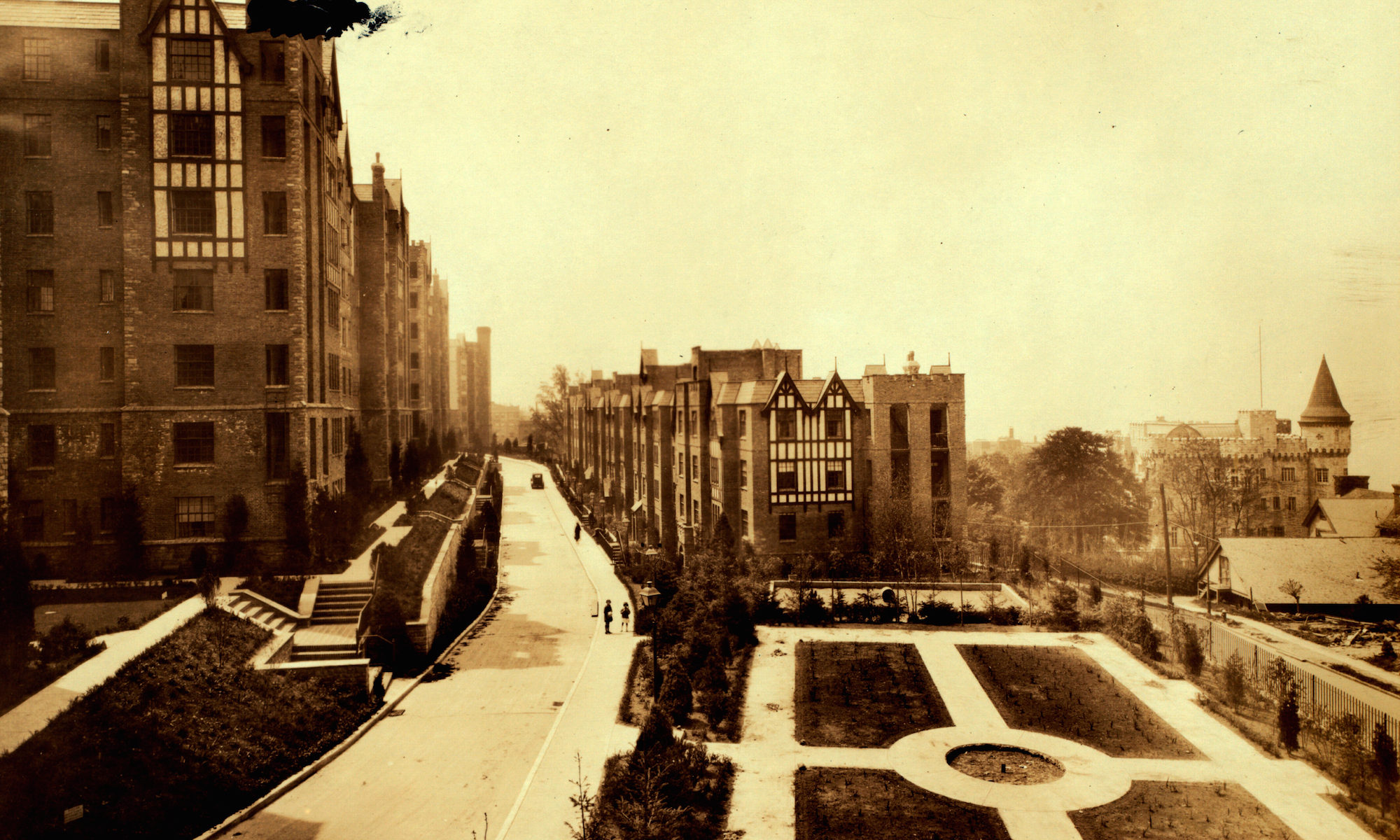Watch “The Paterno Family: Chronicling a New York Real Estate Legacy” video on YouTube
Read ‘The Paterno Brothers & Their Manhattan Apartment Houses‘ Look Book
1923 320 West End Avenue
Located in West End – Collegiate Historic District Extension designated 25 June 2013
1923
503
$500,000.00
WEST END AV, 320-26 15-sty bk apt, 90˙75
OWNER / OWNER ADDRESS
(o) Anthony Campagna / (o) 200 W 72d [72nd] COMMENTS
ARCHITECT / ARCHITECT ADDRESS
(a) R. Candela / (a) 200 W 72d [72nd] (source)
WEST END AVENUE DOCUMENTATION Survey 2008
Address: 320 West End Avenue, northeast corner West 75th Street
Block / Lot: 1167/1
NB Number: 503-23 Date: 1923
Original Use: Apartment House No. of units: 28
Stories: 14 Height: 150’
Estimated Cost: $500,000
Façade Materials: main material brick
base stone lower floors stone
trim brick/stone cornice stone
Structure: steel
Original Owner: Anthony Campagna, 200 West 72nd Street
Architect: Rosario Candela, 200 West 72nd Street
Landmark Status: None
Comments: A simple, Italian Renaissance-inspired building with a two-story rusticated base with brick above. The façade is enlivened with brick rustication and modest limestone and terra-cotta details.
Bibliography:
“Unusual Building Activity Throughout West End Avenue,” Real Estate Record and Builders Guide 112 (17 November 1923): 617. (source)
320 West End Avenue
aka 259 West 75th Street
Date: 1923-24
NB Number: NB 503-1923
Type: Apartment Building
Architect: Candela, Rosario
Developer/Owner/Builder: Anthony Campagna
NYC Landmarks Designation: Historic District
Landmark Designation Report: Addendum to the West End-Collegiate Historic District Extension Designation Report
National Register Designation: N/A
Primary Style: Romanesque Revival with alterations
Primary Facade: Brick and Stone
Stories: 14
Historic District: West End-Collegiate HD Extension
Significant Architectural Features: Rusticated stone base; splayed lintels at first story; roundarched window lintels at fourth and 13th stories; brick quoins.
Alterations: Sidewalk canopy; two light fixtures by entrance
West Facade: Designed (historic, first and second stories painted)
Door(s): Original primary door; non-historic doors at northern and southern entrances
Windows: Replaced
Security Grilles: Not historic (upper stories)
Cornice: Removed
Sidewalk Material(s): Concrete
Curb Material(s): Concrete
South Facade: Designed (historic)
Facade Notes: Similar to West End Avenue; base painted; light fixture with exposed conduit at first story; replacement sash; cornice removed; non-historic first-story window grilles; one through-the-wall air conditioner at the seventh story; non-historic entrance door; historic gate with non-historic railing on top to one-story open extension; concrete paving, concrete steps and metal tube railing to basement entrance in one-story open extension; concrete sidewalk and granite curb
North Facade: Not designed (historic) (partially visible)
Facade Notes: Brick facade
East Facade: Not designed (historic) (partially visible)
Facade Notes: Brick facade; replacement sash; brick at parapet and set-back corner replaced (source)





The New York Herald, New York Tribune (1924-1926); New York, N.Y. [New York, N.Y]. 25 May 1924: B10.

New York Times (1923-); New York, N.Y. [New York, N.Y]. 17 Aug 1924: RE8.

“Campagna is an unsurpassed master in the art of drawing up construction plans and choosing locations, not only, but also in the art of developing particular efficient and suitable plans for each individual location. These are advantages which, apart from the intrinsic goodness of the buildings, considerably raise their value and constitute the secret capital of its sensational building successes. This ability, known and recognized in the metropolis, and his talent of knowing how to apply a new and original plan for each new construction, have given him the most sought-after successes: dare in 1922, when he sells a building, of which he was just building the fourth floor; so in 1924, when the plan he proposed to develop aroused so much interest in the technical world that he had to sell the building for a million dollars, while not even the foundation ditches had been filled [320 West End Avenue]. And the buyers were so pleased with the construction that, as soon as the lawyer Campagna had subsequently developed the plan for a new building, grander and imposing than any other, which occupies an entire block between 89 and 90 St. in Riverside Drive [173-175 Riverside Drive], they wanted to immediately insure the purchase for the fantastic sum of four million dollars.” From “Basilicata nel Mondo” 1926 Anthony Campagna






